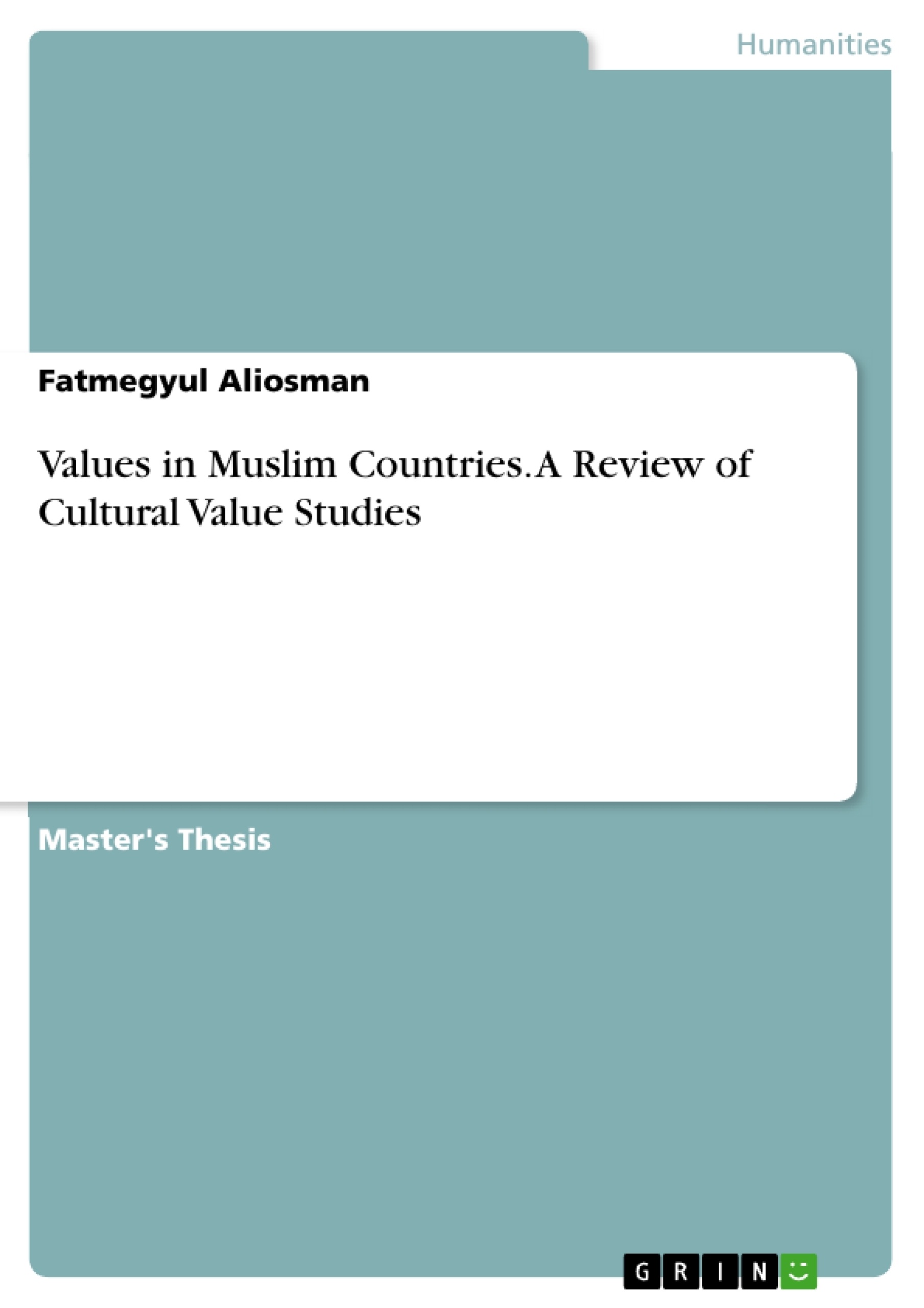The objective of this thesis is to understand whether Muslim groups have any shared values which are distinct from other groups and to understand what cultural values the Muslim groups possess. Like any other religion, Islam influences societies’ cultures of which it is the dominant faith. However, this research aims to understand whether it has a major cultural effect so that Muslim groups can be distinguished from other religions’ groups on the basis of cultural values.
Besides, it is also important to understand whether all Muslim groups share the same values when regional or climate effects are controlled for. House et al. (2004) state that region has influence on cultural values of societies. Climate also has effect on cultural even though it is not significant as regional influence.
Another objective of this research is to identify whether there are value differences between Shia and Sunni branches of Islam. Sunni faith is based on following Prophet Muhammad’s example path and rules described in Koran. In contrast, Shia faith is based on the path of Prophet Muhammad and his direct family members’ religious and spiritual teachings (Farah and Samad, 2015).
Inhaltsverzeichnis (Table of Contents)
- Introduction
- Problem setting
- Objective
- Structure of the thesis
- Value Theory
- The Definition of Value
- Human Values and Cultural Values
- Conceptual framework of major value studies
- Rokeach
- Hofstede
- Inglehart World Value Survey
- Schwartz
- The GLOBE Study
- Comparison
- Comparison of studies – different classification systems
- Particular issues of Muslim values
- Conclusion for the research
- Method
- Methodologies of major value studies
- Hofstede
- Inglehart - World Value Survey
- Schwartz
- The Globe Study
- Countries covered
- Methodologies of major value studies
- Results (supported by relevant research papers)
- Hofstede
- Inglehart - World Value Survey
- Schwartz
- The Globe Study
- Discussion
- Summary
Zielsetzung und Themenschwerpunkte (Objectives and Key Themes)
This thesis aims to provide a comprehensive review of cultural value studies, with a particular focus on values in Muslim countries. It seeks to analyze and compare major value studies, identifying key themes and insights relevant to understanding cultural values in the Muslim world.
- The definition and conceptualization of values, including human values and cultural values.
- A critical analysis of prominent value studies, such as Hofstede, Inglehart, Schwartz, and GLOBE, highlighting their methodologies and key findings.
- An examination of the specific characteristics and challenges of studying values in Muslim countries.
- A comparison of value systems across different cultures, with a focus on Muslim countries.
- The role of cultural values in shaping consumer behavior and market dynamics in Muslim countries.
Zusammenfassung der Kapitel (Chapter Summaries)
The introduction sets the stage for the thesis, outlining the research problem, objectives, and structure. Chapter 2 delves into value theory, exploring the definition of values, the distinction between human and cultural values, and presenting a comprehensive framework of major value studies, including their conceptual foundations and key dimensions. Chapter 3 discusses the methodologies employed by these studies, providing insights into their data collection, analysis, and limitations. Chapter 4 presents the results of the major value studies, focusing on findings relevant to Muslim countries. Chapter 5 engages in a critical discussion of these findings, exploring their implications for understanding cultural values and their impact on consumer behavior in the Muslim world.
Schlüsselwörter (Keywords)
This thesis explores the multifaceted nature of cultural values, particularly in Muslim countries. Key terms include cultural values, value studies, Hofstede, Inglehart, Schwartz, GLOBE, Muslim values, consumer behavior, market dynamics, cultural differences, and cross-cultural comparisons.
- Quote paper
- Fatmegyul Aliosman (Author), 2015, Values in Muslim Countries. A Review of Cultural Value Studies, Munich, GRIN Verlag, https://www.grin.com/document/312642
-

-

-

-
Upload your own papers! Earn money and win an iPhone X. -

-
Upload your own papers! Earn money and win an iPhone X. -

-
Upload your own papers! Earn money and win an iPhone X. -

-
Upload your own papers! Earn money and win an iPhone X. -

-
Upload your own papers! Earn money and win an iPhone X. -

-
Upload your own papers! Earn money and win an iPhone X. -

-
Upload your own papers! Earn money and win an iPhone X. -

-
Upload your own papers! Earn money and win an iPhone X. -

-
Upload your own papers! Earn money and win an iPhone X. -

-
Upload your own papers! Earn money and win an iPhone X. -

-
Upload your own papers! Earn money and win an iPhone X. -

-
Upload your own papers! Earn money and win an iPhone X. -

-
Upload your own papers! Earn money and win an iPhone X. -

-
Upload your own papers! Earn money and win an iPhone X. -

-
Upload your own papers! Earn money and win an iPhone X. -

-
Upload your own papers! Earn money and win an iPhone X.

